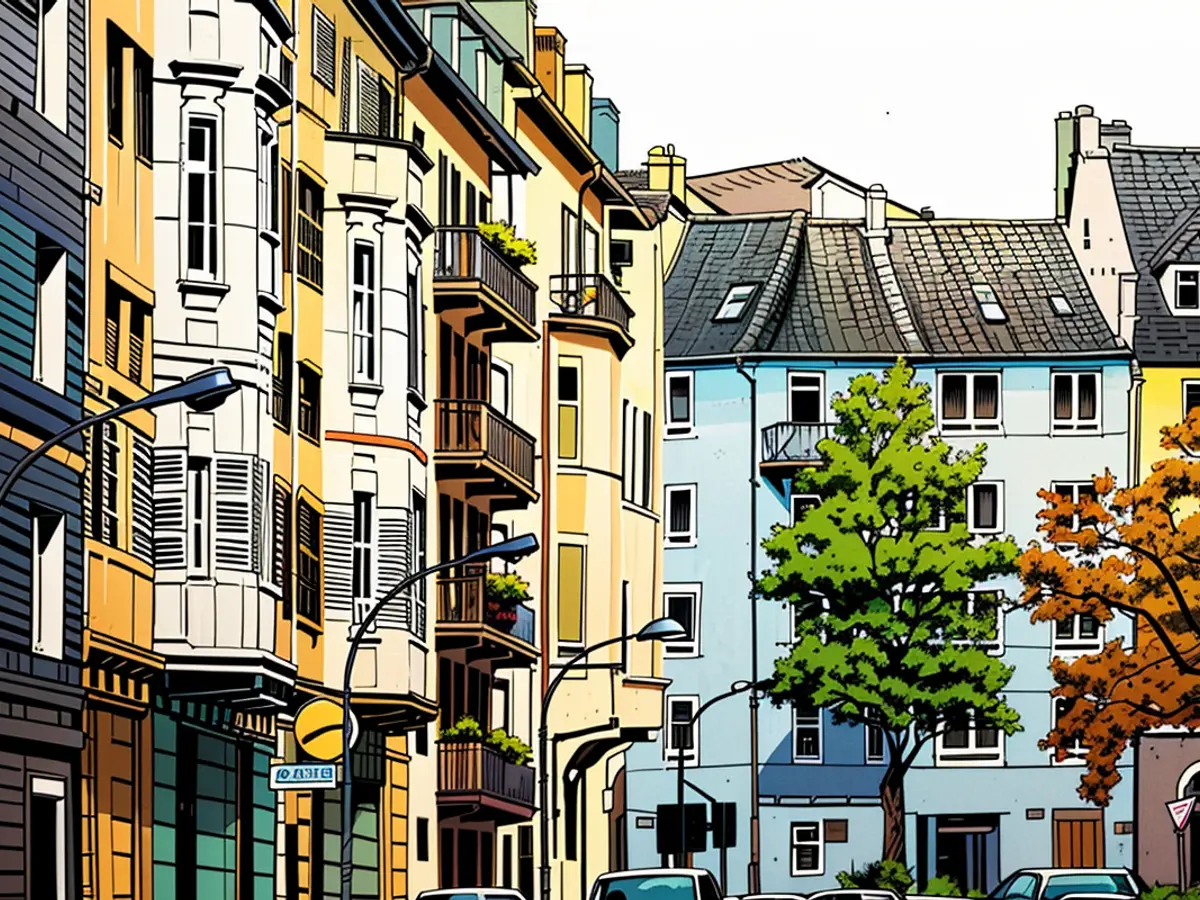Living - Average living space increased in NRW
Citizens in North Rhine-Westphalia have more living space available than a few years ago. The average living space of a dwelling in the year 2022 was approximately 92.7 square meters, which is about two and a half square meters larger than in 2011, as the IT.NRW State Statistics Office reports.
Average living spaces in urban areas are smaller than in less densely populated regions. The largest average living spaces were found in rural areas such as Ostwestfalen-Lippe, Münsterland, and the Eifel. The smallest living spaces were in Gelsenkirchen (76.6 square meters), Düsseldorf, Duisburg, and Cologne (each 77.6 square meters).
The proportion of dwellings with a size of 120 square meters or more has increased in NRW from 22.4 to 24.5 percent between 2011 and 2022. The majority of dwellings were recently between 40 and 79 square meters (42.6 percent). The majority of residential buildings were single-family houses (63.3 percent).
Approximately 3.3 percent of all dwellings in NRW were vacant in 2022, which is less than in 2011 (3.6 percent). The highest vacancy rates were in Altena (11.4 percent), Lügde (6.8 percent), and Winterberg (6.7 percent). The so-called market-active vacancy rate – that is, dwellings that can be rented out immediately or within three months – was 1.4 percent at the end of the period.
The figures are based on the 2022 census. Statisticians determine among other things, how many people live in Germany and how they live, during the census. The reference date was May 15, 2022.
In North Rhine-Westphalia's society, the average living space of a dwelling significantly increased, reaching approximately 92.7 square meters in 2022. This statistic from the IT.NRW State Statistics Office shows an expansion of about 2.5 square meters compared to 2011. Residents in Düsseldorf, despite its urban status, still enjoy a living space of 77.6 square meters, according to the statistics.








